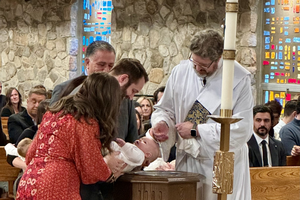Church Councils 101, From Nicaea to Vatican II
To know well the ecumenical councils is to be deep in history

The history of the Catholic Church so far spans about 2,000 years. That’s a wide swath of history, a vast amount of time, and an organization that covers the entire world. The Church has been at the heart of Western civilization and at the forefront of some of the most important moments in history.
This is a lot of history to try to wrap your head around. There is also the Church’s teaching, which has been summarized in various catechetical texts and creeds and tomes, but which is still monumental in scope. A beginner might wonder how to wade into these deep waters. Where to start?
I would suggest that a pretty good way to get a pretty good survey of the Church’s history and teaching would be to explore the ecumenical councils. This is an admittedly basic approach, but it can provide a tremendous grounding in the Church’s history and teaching and serve as a jumping-off point for further study.
I recently wrote a book in which I endeavor to provide just such a basic survey approach to the councils, with bite-sized chunks by which one can begin to explore the highlights of the Church’s history and teachings. Published by Ignatius Press, it is entitled Church Councils: 100 Questions and Answers.
A few of the councils might be familiar — Nicaea, Constantinople, Trent, Vatican II. These names carry a lot of weight. We know them because they promulgated creeds that we pray every week at Mass, or because they reformed the Church in the wake of the Protestant Reformation, or because they are an ongoing topic of discussion and debate in the Church’s life. But there are many more councils beyond these that are not as familiar: How many of us know much about the Third Lateran Council? Or the Council of Basel-Ferrara-Florence? (I sure didn’t!)
We may not think about them every day, and we may not even realize just what a tremendously prominent role the councils have played in Church and world history. But the councils have shaped the Church and, indeed, much of the course of Western civilization. Where would the Roman Empire have been if the Council of Nicaea had not officially condemned the heresy of Arianism that was tearing the empire apart? If the Council of Trent had not so seriously and effectively begun a reform of the Church, would the Catholic Church have dwindled in size and the nascent churches of the Protestant reformers taken over the world?
There have been 21 ecumenical councils in the Church’s history. No two councils are the same, although some are certainly more “not the same” than others. Sometimes there were only 15 or 20 years between councils (the shortest time between two ecumenical councils was just 16 years, between the First and Second Lateran Councils; or 13 years, if you consider the end of the Council of Constance to the beginning of the Council of Basel/Ferrara/Florence); at other times, it was centuries. Sometimes they were called to address a prominent heresy that was poisoning the Church; other councils primarily addressed disciplinary matters among the clergy. Whatever the case, each one of these councils tells us something important about the Church at that time, and thus a survey of the councils is a survey of the Church’s history.
This topic is of particular interest in recent years, as there has been increased focus on the synods of bishops in the life of the Church. While on the surface, a council and a synod may seem remarkably similar, there is an important distinction: The synod can be thought of as an advisory body to the pope, meeting to discuss and reflect on a particular topic, and then to present recommendations or points of reflection to the Holy Father, which he can then do with as he pleases. On the other hand, the ecumenical council is composed of all the bishops of the world, together with the pope as their head, teaching and guiding the universal Church. It’s a question of authority: The ecumenical council has supreme teaching authority; the synod of bishops makes recommendations.
A study of the ecumenical councils gives a pretty good overview of the Church’s history and teaching. Of course, it doesn’t cover everything. But it certainly hits many of the highlights. The greatest doctrinal (and political) challenges to the Church yielded ecumenical councils in response. Some of these councils involved political intrigue, kidnappings, depositions and attempted murder; there were riots and maybe even an infamous slap or two. A basic overview of the councils will also show the reader where his own interests lie: A particular council, a particular teaching or a particular controversy might be of particular interest and lead to further study. Dive into the documents of the councils. Read more Church history, either focusing on specific figures or teachings or periods or what have you, or a broad overview that goes into more detail.
- Keywords:
- ecumenical councils
- church history















